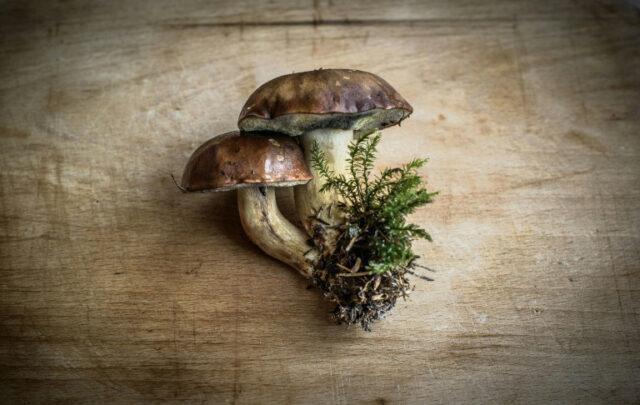
Why would the Slovenian Public Radio, the Botanical Garden at the University of Ljubljana and a number of volunteers all express interest in an area along a railway line? Correct: They are jointly dedicated to the cause of urban gardening.
The Slovenian television show, Good Morning has been providing live advice on plant care and gardening for several years. Employees of the Botanical Garden of the University of Ljubljana appear as experts on the show once a week. An initiative to allocate a plot of land to people living in Ljubljana and offer them help with cultivation from the experts at the Botanical Garden arose from this consulting service. A suitable area was soon found; fallow land along a railway line in the immediate vicinity of the Botanical Garden, which belonged to the city of Ljubljana, was to be used for allotments. Invasive plants, i.e. plants which are non-native but spread aggressively, were growing in this area; the brownfield was also strewn with rubble. It was therefore in the interests of the city for this area to be maintained.
Among the allotment gardeners, who were divided into seven groups, there were families, seniors and singles – city dwellers and people originally from the countryside who had not been living in the city for long and wanted to take care of a plot of land again. The transformation of derelict land into several 30-square-metre gardens was captured by television cameras, and Slovenians were able to follow the whole story once a week on the morning show, Saison.
Use of Brownfield Sites
The experts from the Botanical Garden – which, founded in 1810, is the oldest such garden in Southeastern Europe – are still giving guidance to the allotment gardeners today. From the beginning, there were some obvious rules, explains Blanka Ravnjak, the Botanical Garden’s biologist: "The allotment holders do not use chemical fertilisers, pesticides, plastics or synthetic materials. They also adhere to commonly agreed rules for tidiness." The allotment holders do not have to pay rent, but they have committed themselves to abiding by the rules by signing a declaration.

Photo (CC BY-SA): Jože Bavcon
In Ljubljana, areas which previously had no specific use are readily being developed into allotment gardens these past few years – also following a trend in society: "Knowing what we are eating, and if possible also being able to cultivate it ourselves, has contributed to this new use," says Ravnjak. The allotment holders basically cultivate the classic crops: various types of salad and vegetables, plants from the goosefoot family, such as beets and Swiss chard, and garlic. But each allotment holder also breeds his or her own special varieties, as there are always new vegetables on the market, and people like to try new things in their own small gardens. The Botanical Garden also offers certain types of vegetable seedlings for sale every spring. "In general, we have a wide selection of tomatoes and eggplants, of which we focus on specific varieties with special shapes, colours and sizes," says Stanka Fišer, the Botanical Garden’s agronomist. The allotment holders are also encouraged to harvest seeds and then sow them during the next season and thereby operate their gardens sustainably.
Beyond self-sufficiency
"Our allotment holders have gained not only experience since the beginning of the project, but also self-confidence," states Stanka. She adds that there is much talk about self-sufficiency in the media. Thus, it is increasingly difficult for people to orient themselves with this information overload, particularly when the information is often contradictory. Therefore, Stanka recommends cultivating plants in a small area according to individual desires. When choosing vegetables, people should always take into account how much free time they have and then select an appropriate plant species to sow, as some varieties require daily care, whereas others are much less demanding.
An important part of this project is also cooperation among various generations. Stanka stresses the significance of gardening for the elderly, who would otherwise probably spend a lot more time alone in their homes. In addition to self-sufficiency, gardening should also bring pleasure. "We should not expect a bumper crop every year," explains Stanka. „It would be nice if we were aware of this in other areas as well“, adds Stanka; „this would certainly bring more real satisfaction into our daily lives.“





